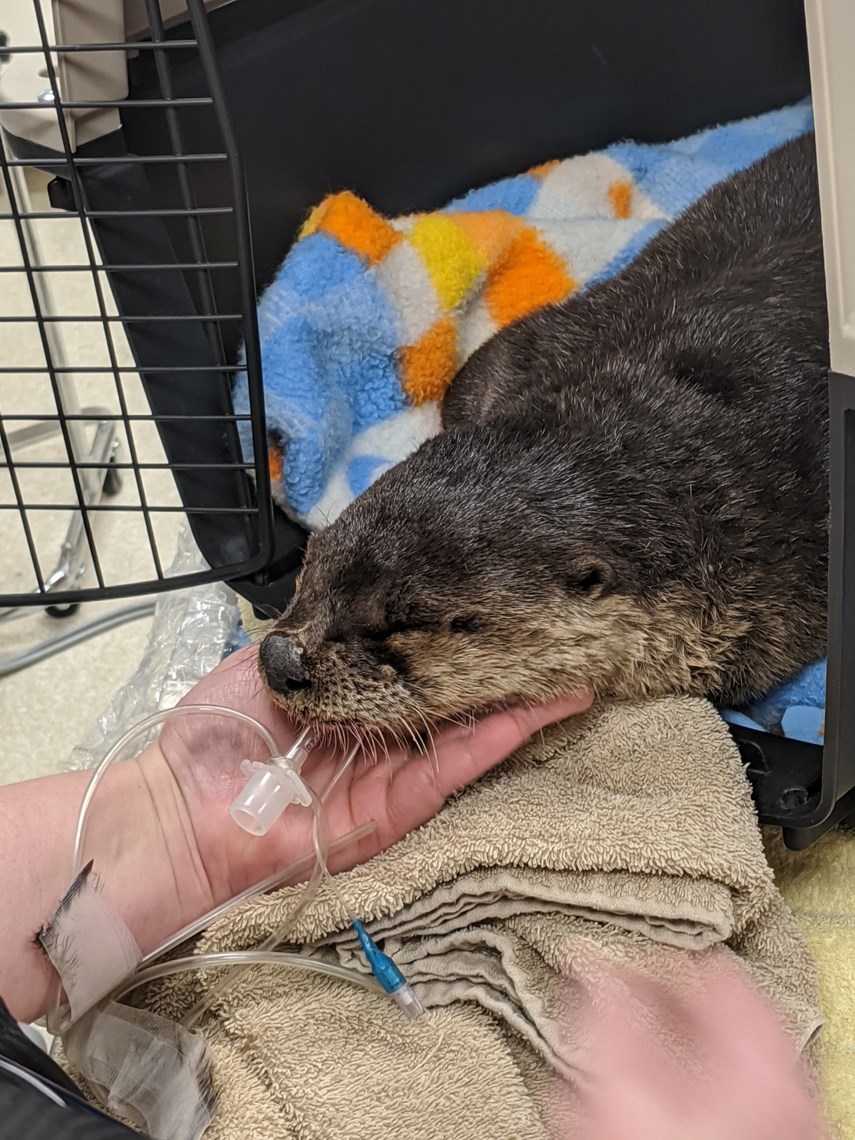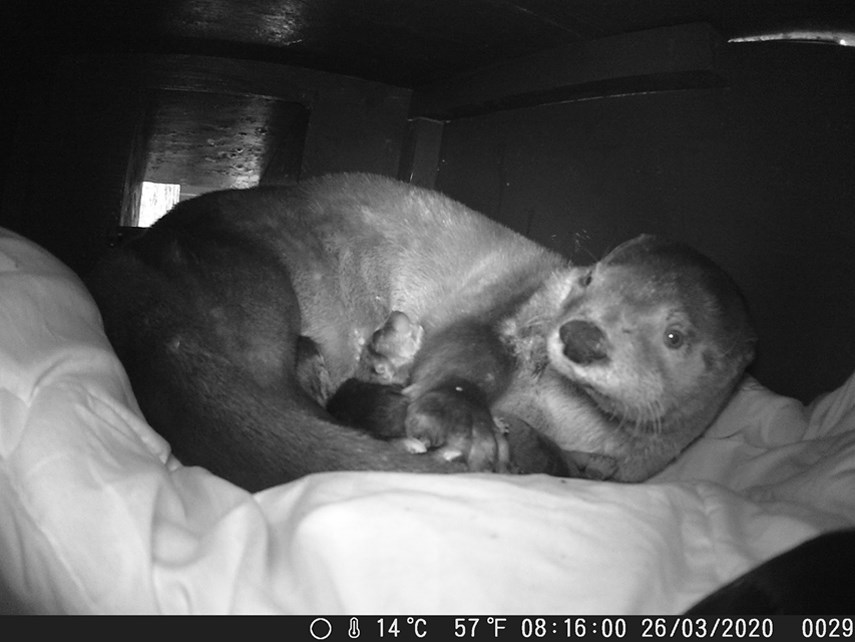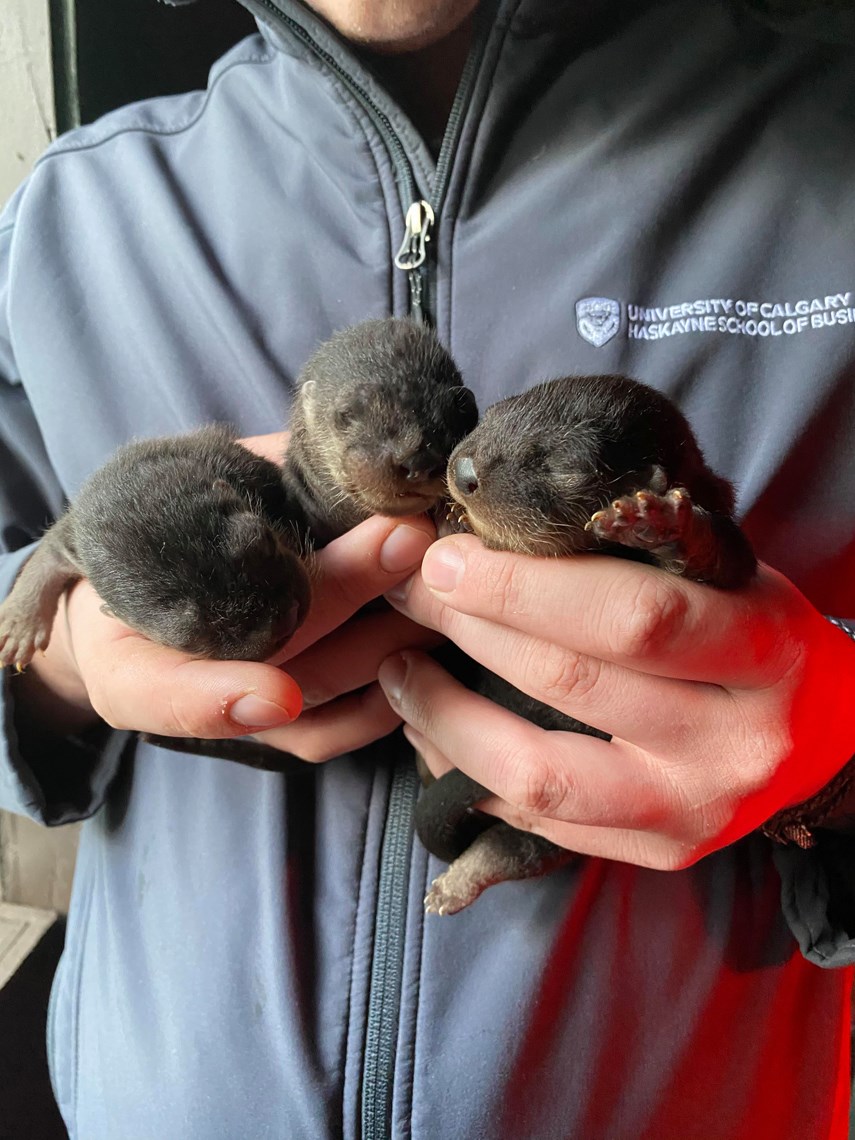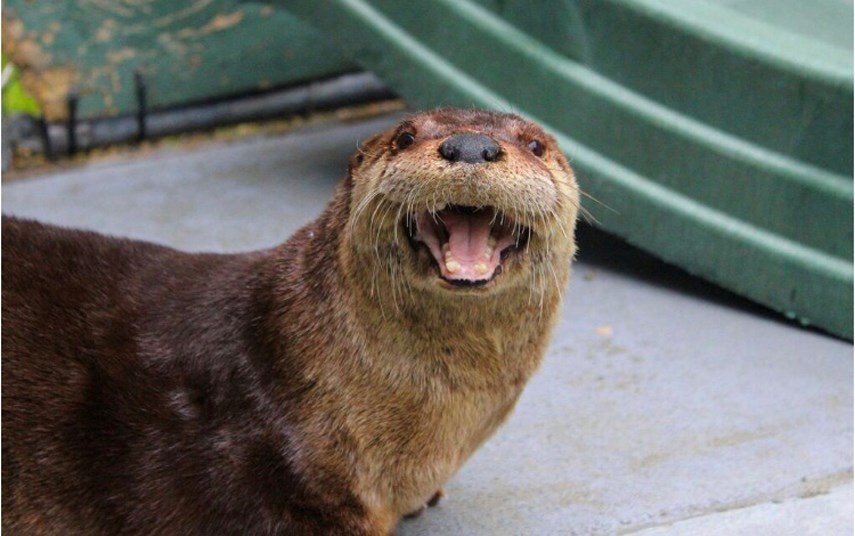As soon as volunteers from the Critter Care Wildlife Society found her in late December, they knew she was in trouble.
The North Vancouver river otter was emaciated and her fur was covered in mats and mites. Most of her front teeth were gone and the nerves were exposed, meaning it would likely have been extremely painful to eat. A vet estimated she was between seven and nine years of age, which is old for an otter in the wild.
They wanted to see about fixing her teeth, but first she would need to get her strength up, which required weeks of round-the-clock care.
“After six weeks on a specialized diet, medication and care, we began to see a vast improvement of her health. She had doubled in weight and was showing what a sweetheart she is,” said Brandon Dean, operations manager for Critter Care.

By Feb. 14, the otter was ready for her dental treatment, a first for both Critter Care and for the specialized dental surgeon Loïc Legendre. Over two hours, Legendre pulled seven teeth and performed three root canals on the otter.
Given the procedure, Critter Care volunteers gave her a name: Dame Judy Denture (or Ms. Dame for short).
Even though she has recovered remarkably well, she won’t be coming home to North Vancouver, said Nathan Wagstaffe, senior wildlife technician for Critter Care.
“She’s not a good candidate for release just because we have to maintain her teeth and she’s also extremely old. She won’t be able to catch fish or live in the wild,” he said.
Ms. Dame has adapted quickly to her new home.
“Her behavior has shown that she isn’t stressed by the presence of humans and enjoys the attention of her carers, getting a little bit more confident every day,” Dean said. “(She) loves nothing more that sunbathing under her heat lamp or rubbing down on some freshly laundered towels.”
Although she’s a bit standoffish in the early mornings, Ms. Dame is uncommonly friendly, Wagstaffe said.
“She’s like a lovely, grumpy old lady,” he said. “She’s calm. She’ll eat out of your hand. I’ve never had a wild otter like her.”
Because of her friendly nature and lack of prospects in the wild, the leadership at Critter Care opted to make Ms. Dame their official ambassador. The non-profit hasn’t had a permanent resident to help them with fundraising and public education since Hoover, a female bobcat who lived there 13 years. She died in 2012.
Ms. Dame’s story has had a number of twists and surprises for her caregivers along the way, but in late March, she showed she had one more trick up her sleeve. She gave birth to three otter pups – two males and a female.
Otters are capable of delayed implantation – the ability to hold fertilized eggs for up to 273 days.
“They can delay getting pregnant until the perfect circumstances,” Wagstaffe said. “She had a regular food source and she was comfortable so then her body just said ‘Right. We’re in a good place right now. Let’s get pregnant.”
Staff are calling the pups Custard, Jam and Scone. Dean said they will be released into the wild when they are old enough next spring.
“Ms. Dame is doing an amazing job caring for her babies,” he said.
To celebrate her success (and help cover the cost of her substantial dental bills,) Dean is hoping people will sign up to sponsor Ms. Dame and her pups. People who contribute $35 can get a laminated certificate.
Critter Care rehabilitates dozens of animals per year, including many bears from the North Shore, but they get by exclusively on donations.
“It’s a lot of mouths to feed at the moment,” Wagstaffe said.
To donate,






